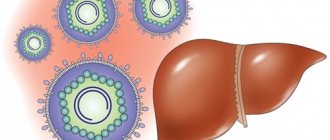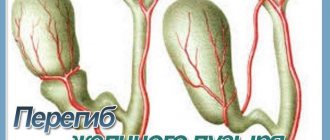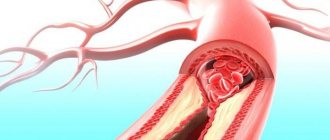Kinds
The classification of coma includes 15 degrees. But in practice, there are three types of coma:
- deep coma - the patient does not react to external stimuli, does not open his eyes or make sounds, does not come to his senses;
- coma (the most common type) - the patient is unconscious, but can open his eyes or utter certain sounds. Characterized by attacks of decerebral rigidity (spontaneous muscle reaction in response to external irritation, consisting of flexion of joints, twitching of limbs);
- superficial coma - the patient is unconscious, but can open his eyes in response to a familiar voice, and can also pronounce words, can answer questions, but his speech is incoherent.
Stages of coma development:
- precoma;
- coma 1st degree;
- coma 2 degrees;
- coma 3 degrees;
- coma 4 degrees.
Causes
Reasons that can cause a coma:
- head injury or trauma;
- brain infections;
- lack of hormones in the body;
- loss of electrolytes, energy substances and water by the body;
- brain damage caused by oxygen deprivation;
- overdose of drugs, certain medications;
- overheating of the body;
- severe alcohol poisoning;
- various diseases (diabetes mellitus);
- exposure to electric current;
- stroke.
What is coma?
Koma is accompanied by suppression of the central nervous system, which leads not only to loss of consciousness, but also disruption of the activity of all body systems (respiratory, cardiovascular, etc.)
If a person falls into a coma, he lies with his eyes closed and does not feel any sounds, stops responding to pain, and even intense stimulation often does not help. The manifestation of other symptoms of this pathology, for example, preservation of reflexes, independent breathing, etc., is due to the causes of the condition.
Medically induced coma is an artificial stupor to protect the cerebral cortex from pathologies.
Not all brain injuries cause this condition. For it to occur, the areas of the brain that are responsible for wakefulness must be affected.
Symptoms
Symptoms of coma vary depending on its stage.
Symptoms of precoma:
- confusion;
- moderate stupor;
- lethargy;
- drowsiness or, conversely, excitement;
- psychomatic states (with hypoglycemic coma);
- movement coordination disorder;
- reflexes are preserved.
Symptoms of coma 1st degree:
- sleep or stupor;
- severe deafness;
- inhibition of the reaction, even in response to strong stimuli (including painful ones);
- ability to perform light movements;
- the patient can swallow liquid food or water;
- roll over independently while lying in bed;
- pupils react to light;
- possible squint;
- eye movements are pendulum-like in nature;
- relaxation of skin reflexes is observed.
Symptoms of coma 2 degrees:
- there is no contact with the patient;
- deep dream;
- weakening of the response to pain;
- sopor;
- rare spontaneous movements that are uncoordinated;
- pathological breathing;
- involuntary defecation and urination;
- the reaction of the pupils to light is relaxed;
- the pharyngeal and corneal reflexes are preserved;
- no skin reflexes;
- muscular dystonia;
- pyramidal reflexes are determined.
Symptoms of 3rd degree coma:
- there is no consciousness, corneal reflexes, or reaction to pain;
- suppression of the pharyngeal reflex;
- miosis;
- pupils do not react to light;
- decreased tendon reflexes and muscle tone;
- convulsions are possible;
- involuntary defecation and urination;
- reduced blood pressure;
- breathing is arrhythmic or depressed to rare and superficial;
- body temperature is reduced.
Symptoms of stage 4 coma:
- hypothermia;
- complete areflexia;
- cessation of respiratory function due to inhibition of the medulla oblongata;
- muscle atony;
- a sharp decrease in blood pressure;
- death.
Coma can develop almost instantly, within minutes or over several hours.
Consequences of an induced coma
This method is used in the most difficult situations, due to the fact that sometimes there are complications after operations. This is especially true for operations in connection with traumatic brain injury, strokes, and arterial ruptures. The sooner you seek help from doctors in these situations, the less sad the consequences after surgery will be.
More than 20% of patients who have experienced an induced coma complain of side effects:
- heart pain;
- disturbance of peristalsis of the small and large intestines;
- renal colic;
- a sharp decrease in immunity.
Often, while in a coma, a person develops diseases of the lungs and upper respiratory tract due to mechanical ventilation.
Diagnostics
For a correct diagnosis, you need to make an appointment with a neurologist. Consulting a doctor will help rule out all conditions similar to coma (hysteria, drug overdose, epilepsy and others). To make a diagnosis, a specialist analyzes the symptoms and signs of the patient's condition. The following diagnostic procedures are prescribed:
- blood analysis;
- advanced biochemical blood test;
- Analysis of urine;
- computed tomography of the head;
- electrocardiogram;
- electroencephalogram;
- X-ray of the cervical vertebrae;
- Cerebrospinal fluid tests (sometimes).
Rarely, based on the symptoms of a coma, it is possible to determine the cause that caused this condition: with oxygen starvation, the pupils are dilated and do not respond to light, and in the event of a stroke and overdose, the pupils will be constricted.
How to fall into a coma?
Comatose state refers to diseases of a concomitant type. It is a complication that occurs when nerve pathways are damaged, which affects the functioning of the entire central nervous system. Signals from the outside world enter the cerebral cortex through the reticular formation. If it is damaged, the connection between the brain and the outside world disappears. This leads to a coma state.
The nerve processes of the reticular formation can be destroyed for the following reasons:
- physical impact (stroke, mechanical brain damage, etc.),
- the influence of harmful chemical elements (formed inside the body and coming from outside),
- hypoxia (decreased oxygen content in the blood),
- diabetes,
- liver and kidney disease, etc.
A coma may occur as a result of taking narcotic substances or psychotropic drugs. Often the cause of the pathology is an increase in intracranial pressure, which increases under the influence of tumors.
Treatment
Treatment is carried out in a hospital setting and depends on the reasons that caused it. Emergency treatment consists of:
- the use of drugs that support blood circulation and breathing, and stop vomiting;
- administration of insulin or glucose (for diabetic coma);
- blood purification (with uremic coma);
- surgical treatment is performed by a surgeon (for head and neck injuries);
- surgical intervention by a neurosurgeon (for hematomas of the meninges);
- anticonvulsants;
- drugs that force diuresis (in case of intoxication);
- use of an antidote (in case of overdose);
- administration of thiamine (for hypovitaminosis);
- tracheal intubation;
- artificial ventilation;
- antibacterial therapy.
Areas of use of the method
This treatment method is necessary to prevent extensive hemorrhages due to traumatic brain injuries. In neurosurgery, the method is often used for complex operations performed simultaneously on one patient. It has been proven in practice that after such an anesthesia-coma, the rehabilitation process goes much faster.
For people with rabies, an artificial coma is currently the only chance to be cured. So far, research is being conducted in people with epilepsy, but the results in 90% of cases are positive.
Side effects
Various adverse reactions cannot be excluded:
- pneumonia, adhesions, damage to the tracheal mucosa, bronchitis;
- hallucinations, nightmares during immersion in a state of medical coma, neuralgia after emerging from a coma;
- delayed reactions: a sharp deterioration in memory, changes in behavior, speech, complete forgetting of some abilities, the emergence of new ones, someone cannot start speaking.
Characteristics that influence the state after emerging from a coma:
- sleep duration;
- heartbeat;
- biochemical data during the operation;
- brain death (in this condition it is no longer possible to recover from a coma).
What are the complications of coma?
After an artificial coma, complications are observed in many patients. The likelihood of their occurrence increases in cases where drug-induced sleep lasted for a long time.
In addition to bedsores, a coma can provoke kidney and heart failure, a sharp change in blood pressure, infectious damage to the body, and neurological disorders. A slowdown in vital functions is fraught with the development of pathologies in the digestive system, problems with urination, rupture of the bladder and the development of peritonitis. With a weak respiratory system, there is an increased risk of pulmonary swelling, pneumonia, and tracheobronchitis.
A life-threatening condition occurs when the patient develops a gag reflex, which can damage the airways and cause asphyxia. , clinical death or irreversible biological death can occur .
Purpose of using medicated sleep
By introducing a person into an unconscious state, they pursue different goals.
- Medication-induced sleep during childbirth is necessary so that a woman can rest from severe pain during prolonged contractions. The drugs are administered in the first half of labor. The woman and child must be constantly under the supervision of a doctor. Strong sedatives can penetrate the placenta and reduce motor activity in newborns. If the instruments show that the baby feels discomfort, the mother’s sleep is interrupted.
- In dentistry, artificial sleep is used instead of general anesthesia in the treatment of abscess, periostitis, and during jaw surgery. It is recommended for people who are afraid of pain and fear the dentist.
- Pneumonia, caused by a complication of an atypical influenza virus, causes degenerative changes in the lungs, leading to death. To avoid this, the patient is placed in an artificial coma.
- Stroke and cerebral infarction impair blood circulation, promote the death of nerve cells and tissue necrosis. Medicinal sleep helps reduce intracranial pressure and speed up the rehabilitation process.
- Neurosurgery and traumatic brain injury can cause swelling and tissue necrosis. Prolonged sleep slows down blood flow, constricts blood vessels, and stabilizes intracranial pressure. The complex action removes fluid from brain tissue, eliminates venous congestion and normalizes the flow of cerebrospinal fluid.
An artificially induced coma is necessary for patients with large-scale burns to reduce suffering from unbearable pain.
The method is in demand for the treatment of infants exposed to hypoxia in the womb. Newborns are immersed in therapeutic sleep to normalize metabolic processes in cells.
Forecast
The prognosis, unfortunately, may vary. The most disappointing results most often result from a rupture of an aneurysm or a stroke, that is, a hemorrhage in the brain. The longer the victim remains in an induced coma, the less chance there is of saving him. When studying the condition, it was found that patients who remained in a coma for more than a year died in 60% of cases or remained at the level of reflexes, in 30% they received disability, 10% of people were restored to normal levels. But in some cases, a medically induced coma is the only saving chance for a person.
How are comatose states classified?
The importance of separating comatose states lies in the fact that the very reason that served as the impetus for the formation of a coma will not reflect all the changes and severity of the victim’s condition, and clear and specific criteria are needed on which to build treatment and make cautious predictions. Based on the severity of the change in consciousness (depth of coma), four progressively more severe stages are distinguished. In some cases, an exact division of severity levels is difficult, since the patient can move from one to another in a matter of minutes. The classification of degrees is based on certain symptoms that are identified in the victim. You can read more about this on our website - https://MedAboutMe.ru/zdorove/spravochnik/slovar-medicinskih-terminov/koma/.
Coming out of a medically induced coma
Removal from sleep is carried out when a life-threatening pathological process has been stopped or the unconscious state has led to a deterioration. The exit happens gradually. First, the patient is briefly disconnected from artificial ventilation and spontaneous breathing is stimulated.
Withdrawal from medicinal sleep occurs when the body’s condition has returned to normal.
After lung function is normalized, the functioning of the nervous system and reflexes are restored. The man opens his eyes and slowly comes to his senses.
After this, treatment of the disease for which artificial sleep was used is continued. The patient experiences muscle weakness and must relearn how to walk and take care of his needs.
Various doctors are involved in the rehabilitation process:
- neurologist;
- therapist;
- psychologist;
- masseur.
The recovery period takes from 1 to 3 months.











